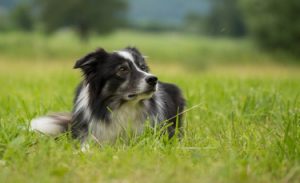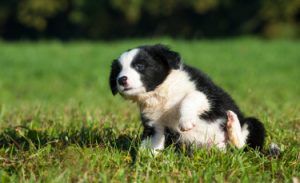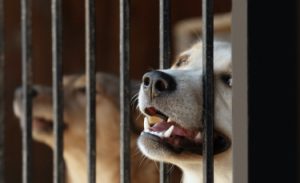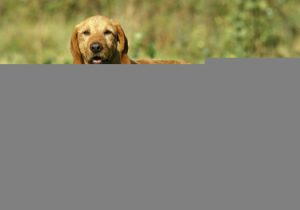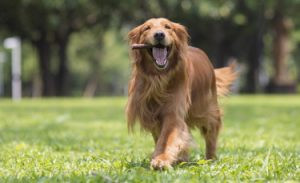Other names: Loulou de Pomeranie, Spitz Nain, Pomeranian, Deutscher Spitz, German Spitz, Spitz-Loup, Keeshond, Grand Spitz, Pomerania
The German Spitz is a robust dog, recognizable by its pretty abundant fur, its bushy collar and tail, its head resembling that of a fox and its pointed ears. All this gives it an elegant and playful appearance. The German Spitz exists in 5 varieties of sizes, ranging from the largest (Spitz-Loup or Keeshond) to the smallest (Dwarf Spitz, Pomeranian Loulou or Pomeranian), including the Medium Spitz. Other than the sizes, the physical characteristics are roughly the same for all varieties. The gait is flowing and elastic in this breed.
<!–
–>
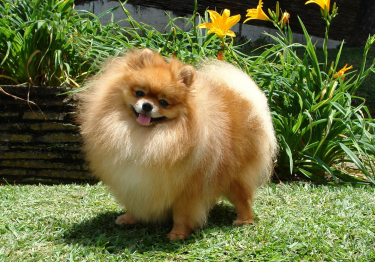
| Long | |
| Germany | |
| Average | |
| Triangular |
| Sex | Weight | Cut |
|---|---|---|
| Female | From 2 kg to 20 kg | From 20 cm to 38 cm |
| Male | From 2 kg to 20 kg | From 20 cm to 38 cm |
History of the breed
The Spitz is the oldest breed in Central Europe . She descends from the Stone Age Bog Dog and Lake City Dogs , and is the source of many other races on the continent. The ancestors of the Middle Spitz were mainly used as sheepdogs. The larger individuals and those smaller, the Dwarf Spitz, have emerged as to the 18th century. The German Spitz was recognized definitively by the FCI on 1 January 1957. Its official FCI standard in force was published in January 2013.
Pictures of German Spitz
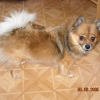


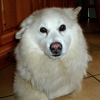
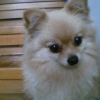
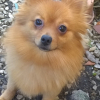
See all German Spitz photos of Woopets members
Physical features
His coat: long, wide and straight, associated with a short, thick and silky undercoat. Short and velvety on the head, ears, anterior sides of the limbs and feet. Abundant mane on the neck and shoulders. Generous fringes on the posterior sides of the front limbs.
Its color: cloudy gray in the Wolf Spitz. Black, brown and white at the Grand Spitz . Black, brown, white, orange or gray-wolf in the Medium Spitz , the Small Spitz and the Dwarf Spitz.
Its head: larger skull in its posterior part, tapering off and becoming wedge-shaped to the end of the nose. The stop is never steep. It is moderately to well marked.
His ears: small, triangular, pointed, well erected and set high, constituting a characteristic trait of the Spitz type.
His eyes: medium large, slightly elongated and dark in color.
His body: top line starting at the tip of the ears and continuing after a slight curvature in the short, horizontal back. The withers are well extended, the back is short, straight and robust. The croup is broad, the chest is well let down and rounded, the belly is very slightly raised.
Its tail: very bushy, set high, of medium length, folded down and rolled over the back.
Behavior and character
| Affectionate | |
|---|---|
| Calm | |
| Protective | |
| Independent | |
| Hunter | |
| Barks / howls |
Behavior with others
| Cohabitation with children | |
|---|---|
| Sociable with other animals | |
| Love strangers |
The German Spitz is an alert, lively, attentive dog and extremely attached to his master . Devoid of any hunting instinct, he is endowed with a natural distrust of strangers , is never fearful or aggressive. He thus has all the qualities of a good watchdog , especially alarm. He tolerates loneliness more or less.
The German Spitz
is it right for you? Take the test!
Education
| Clever | |
|---|---|
| Obedient |
The German Spitz loves to please his owner and is very receptive , which greatly facilitates his education.
He must be trained young not to bark excessively.
Living conditions
| Suitable for apartment living | |
|---|---|
| Good for new masters | |
| Love it hot | |
| Love the cold |
The German Spitz can live in apartments and in urban areas in general . He is just as happy in the countryside , where he enjoys greater freedom. The German Spitz is compatible with all family situations and gets along rather well with children. However, due to its small size and strong attachment, the Dwarf Spitz can be easily injured – especially by young children – by inattention or sudden movements.
Health
| Solid | |
|---|---|
| Ease of gaining weight |
The German Spitz is a generally robust dog, which tolerates cold and bad weather quite well . Be careful to monitor the weight of the Dwarf Spitz, as it is small in constitution and has a fast metabolism.
Hypoallergenic breed
No
Litter size
Between 1 and 5 puppies
| Major concerns |
|
|||
| Minor concerns |
|
| Occasional concerns |
|
|
| Suggested tests |
|
To protect you from these risks and insure your companion in the event of health problems, Woopets recommends German Spitz dog insurance .

function showAssuranceForm () {var siteReferer = var id_race_association = ”; //console.log(id_race_association);success: function (html) {}});}document.addEventListener (‘DOMContentLoaded’, () => {$ (‘# assuranceModalBanner’). on (‘show.bs.modal’, function (event) {showAssuranceForm ();});});
Life expectancy
Minimum: 12 years old
Maximum: 16 years
The life expectancy of a German Spitz is, on average, between 12 years and 16 years.
Calculate the human age of your German Spitz!
To choose… 1 year 2 years 3 years Four years 5 years 6 years 7 years 8 years 9 years 10 years 11 years old 12 years 13 years 14 years old 15 years old 16 years old 17 years 18 years old 19 years old 20 years 21 years old
Maintenance and hygiene
| Ease of maintenance | |
|---|---|
| Cost of maintenance | |
| Hair loss |
| Drool level | |
|---|---|
| Ease of grooming |
The thick fur of the German Spitz requires extensive and regular maintenance to preserve its cleanliness and appearance. This dog experiences 2 moults per year during which hair loss is significant.
It is recommended to brush the dog several times a week and more (daily) during the moulting period. Brushing against the grain is recommended to add volume to your fur. Rather than washing it, it is better to clean it with a dry shampoo. His hair should never be completely cut, as this can be dangerous for his health and his skin, which would no longer protect properly against the sun’s rays.
Teeth should be brushed regularly in order to limit the appearance of tartar and the proliferation of bacteria. His eyes and ears should be checked weekly to make sure there is no trace of dirt or possible infection.
Price and budget
Purchase price
Mini
€ 1,500 Maxi
2000 €
The purchase price of a German Spitz is between 1500 € and 2000 €.
Annual maintenance cost
Mini
€ 300 Maxi
500 €
The annual maintenance cost of a German Spitz is between € 300 and € 500.
Name ideas for a German Spitz
| Male |
|
| Female |
|
None of these proposals suit you? Use our tool to find the name of your German Spitz!
Food
The German Spitz tends to gain weight if overfed, so stick to a regular feeding schedule. Note that the Dwarf Spitz has a small stomach forcing it to eat often, but in small quantities. Be careful to monitor the quantities of your rations .
Due to the many variations in the breed – weight, health, energy – it is recommended that the owner seek advice from a veterinarian or breeder .
Want the best for your dog?
Create tailor-made food for your German Spitz
I discover !
PROMO -30% | Delivered to you!

Physical activity
| Athletic | |
|---|---|
| Energy level | |
| Potential to play |
The German Spitz needs long daily outings to maintain physical and emotional balance. He needs to surpass himself and spend time with his master. He likes to have fun, especially with toys.
Famous German Spitz Breed Dogs
Queequeg : This Dwarf Spitz was collected by FBI agent Dana Scully , protagonist of the hit American series The X-Files . The dog wears a necklace with a pendant in the shape of a golden bone, on which is inscribed his first name. It was named after The Harpooner from Moby Dick , a novel by American writer Herman Melville .
Gidget : in the animated films Comme des bêtes (1 and 2), released in 2016 and 2019 respectively, Gidget is a very flirtatious and courageous Loulou dog from Pomeranian who befriends the main character named Max , a Jack Russell Terrier.
Competitions
| Classifications & Standards |
|
Others
| Master character <span class="btnTooltip qTip2" title="- Calm: the master must be gentle and know how to show patience. – Active: the owner must be energetic and dynamic to live in harmony with his dog. – Hyperactive: the owner must be stimulating and very restless to suit the temperament of his dog.”> |
Calm |
|---|
We talk on the forum
My German Spitz bitch is expecting little ones!
Message from Bella08
Questions about the reproduction of the Spitz?
Message from Lisa Rea
Shepherd, spitz, Nordic dog: info, reviews, ideas
Guest message
Alopecia X dwarf spitz
Guest message
A Japanese spitz is good for children from 10 to 12 years old
Guest message
Do you have a question about the German Spitz?
Do not hesitate to ask Woopets visitors for advice on the forum!
FCI Information
FCI No.
97
FCI Group
Group 5: Spitz-type and primitive-type dogs
Recognized by FCI
Since 1957
</div


